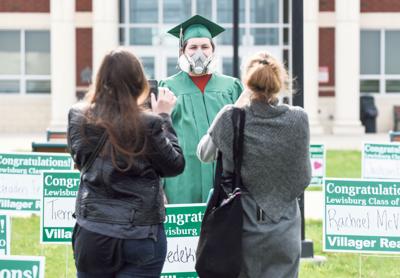HARRISBURG -- The state Department of Education on Wednesday announced guidelines that local schools must follow for reopening in the fall, with stricter requirements planned in counties that haven't moved to the green phase of the state's reopening strategy.
Under the state’s plan, schools can begin reopening after July 1, but before they reopen, the local school board must approved a health and safety plan spelling out its plan for social-distancing at school and that plan must be presented to the Department of Education, said Matt Stem, the Department of Education's deputy secretary for elementary and secondary education.
Stem said the state was moving to roll out the guidelines early in because school leaders had been asking for "timely guidance."
In addition, the local schools will be required to “post those plans online for public inspection so families can absolutely and in a predictable manner know what’s going to be expected of them” before classes resume,Education Secretary Pedro Rivera said.
“The Wolf administration remains committed to the safety and welfare of students, faculty and staff, and any reopening plan must be rooted in these principles,” Rivera said. “As school leaders resume instruction in the 2020-21 school year, the department recognizes the need for preliminary guidance to aid in planning for a return to in-person instruction, delivery of services, and resumption of extracurricular activities.”
He added that “given the dynamic nature of the pandemic,” state officials view this preliminary guidance “as a starting point” for local officials to use in developing their plans for reopening.
The new guidelines come just days after Gov. Tom Wolf announced that the state planned to reopen schools, while warning that school operations certainly won’t be the same as they were before the pandemic hit.
“Schools will look different. There might be more online learning. There might be less classroom learning. There might be fewer students in each classroom,” the governor said Friday.
The Pennsylvania School Board Association welcomes the state's move to begin rolling out guidelines but it's still far from clear what school will actually look like in the fall, said Annette Stevenson, a PSBA spokeswoman.
"The guidelines are a start, but they do not address some of the major issues schools will encounter as they plan for reopening," she said. "For example, the guidance recommends that schools create staggered schedules to limit the number of individuals in classrooms and other common spaces. This would create numerous logistical, labor and financial implications for schools."
The guidance draws key distinctions between education in green phase counties -- where social-distancing restrictions are more relaxed -- and classes in yellow phase counties.
By Friday, 34 of the state’s 67 counties will be in the green phase, with the rest of the state in the yellow phase.
Key differences:
- In the yellow phase counties, schools are required to develop “processes for monitoring students and staff for symptoms and history of exposure,” while there is no similar demand on schools in green phase counties;
- In the yellow phase, schools must develop guidelines spelling out who among students and staff must wear masks, while in the green phase counties, the guidelines indicate that the school’s plan “may include … to the extent possible” guidelines for wearing masks by students and staff;
- In the yellow phase, schools must develop plans to provide at least 6-feet of space between students in class, again, in the green-phase counties, the guidance indicates that school’s plan should provide 6-feet social-distancing space in class “to the extent possible”;
- In the yellow phase, students would eat lunch in their classrooms rather than in the cafeteria, while in green phase counties, schools are allowed to develop “procedures for safe use of cafeterias.
While business reopening restrictions have included limits on the number of occupants allowed in a facility, the school reopening is focusing more on requiring plans to provide social-distancing space and allowing schools to figure out how many students they can accommodate, Rivera said.
“Schools can personalize those expectations,” he said. “We’re not specifying class size but the space.”

